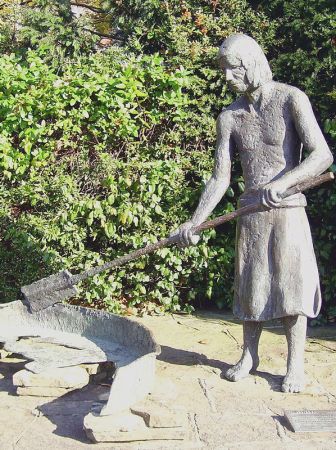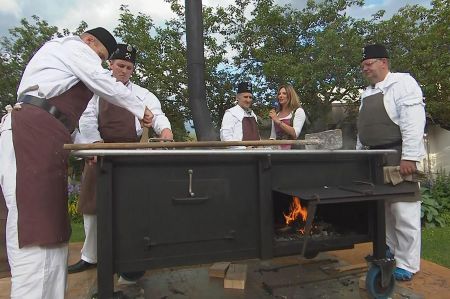Schwäbisch Haller Salzsieder visits Izmir
- Written by Portal Editor
On the occasion of the 5-year town twinning between Schwäbisch Hall and the Turkish town of Balikesir, the mayor of Schwäbisch Hall and a delegation of council members, citizens and those interested in the town will hold a meeting from 03.09. until September 9th, 2011 in Turkey.
A group of around 50 people from the traditional association of Hall salt workers will also be there.
On Monday afternoon, September 5th, 2011, the group of salt workers will be in Izmir together with the mayor for a short visit, where a short performance of the Hall salt workers in traditional costumes will take place in one of the public squares.
Since November 2, 2006, Schwäbisch Hall has been one of around 50 German cities that maintain a partnership with a Turkish community. Mayor Hermann-Josef Pelgrim travelled to Balikesir with a delegation of 18 to sign the partnership document together with the local mayor Sabri Ugur.
On May 26th, 2007, at the cake and fountain festival of the Haller Sieder, the partnership certificate was countersigned by the Lord Mayors Sabri Ugur, Balikesir and Hermann-Joesf Pelgrim, Schwäbisch Hall in the presence of a larger delegation from Balikesir.
Since then there have been continuous mutual visits. Here are more dates in 2011:
03.09. to 09.09.2011 5-year twinning anniversary in Balikesir.
01.10. to 09.10.2011 Citizen's trip to Balikesir.
15.10. to 22.10.2011 Citizens from Balikesir as guests in Schwäbisch Hall.
Well-attended festival of the Haller Salzsieder
Red and white carnations, green and white flags and the red traditional costumes of the Hall salt workers characterized the historic cake and fountain festival at the weekend in Schwäbisch Hall. 18,000 visitors came.
 “We had a diverse program based on historical facts. Visitors were enthusiastic about the performance of the 60 dancing couples of the Great Siederhof," said Robert Spoden. He is the managing director of the Alt Hall association, which organizes this festival.
“We had a diverse program based on historical facts. Visitors were enthusiastic about the performance of the 60 dancing couples of the Great Siederhof," said Robert Spoden. He is the managing director of the Alt Hall association, which organizes this festival.
The Siederfest began on Saturday with the incarceration of delinquents in the Sulfer Tower. The protector of the salt spring, the Hoolgaascht, showed his help. On Whit Monday, the oldest historical festival in North Württemberg ended with a dance by the Great Siederhof and a shooting salute.
Pentecost Sunday was the focus. Thousands of spectators in the market square watched the magistrate's approval of the festival and the presentation of the 90-pound, three-tier cake. There was much applause for the humorous and hearty toasts of the guests, such as: "...My bum, once plump and round, is suffering from muscle atrophy...".
Court scenes, compiled from the city archives, showed medieval jurisprudence. Salt boiling and salt sales were demonstrated. The rescuing of the miller family from the burning mill in 1316 was re-enacted. According to legend, the settlers are said to have taken over this. The cake is said to have been donated by the miller as a thank you.
The musical conclusion on Sunday evening received great applause. The Kleine Siederhof, children from 5 to 12 years - and the Große Siederhof - young people and adults - made music and danced the historical row dances together.
The festival for the salt workers has been handed down in Schwäbisch Hall since the 14th century. The origin was the purification of the salt spring. This hard work was rewarded with a festival, the course of which was prescribed and which had to be approved every year. The order was last amended in 1785 and is still trend-setting today.
Source newspaper article
Please read as well:
